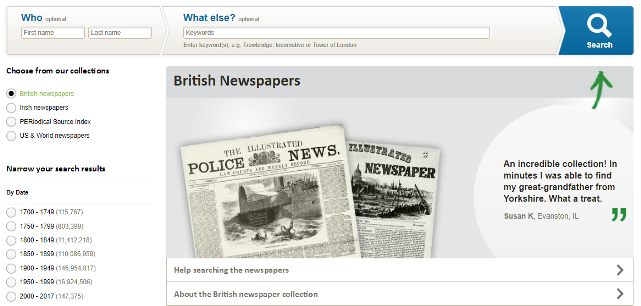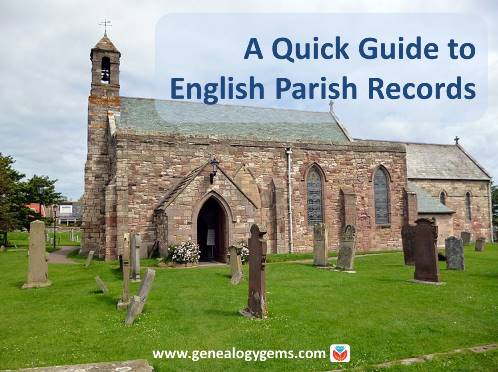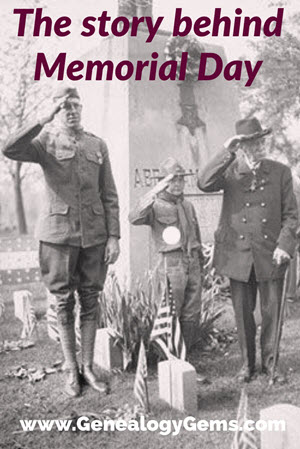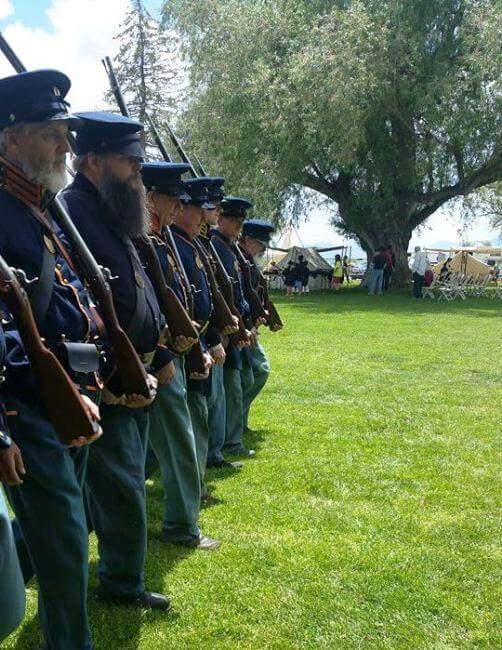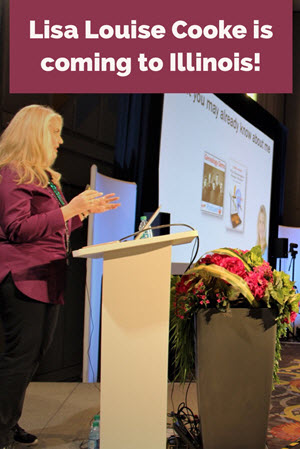Blog


Now Online: England Parish Records and More
English parish records top this week’s list of new online genealogy records. More new or updated family history collections: British newspapers, pensions and India records; records for Brazil, Germany, The Netherlands, Peru, and Poland; UK images and deaths; US obituaries; newspapers for Delaware, Maine, New Hampshire and Rhode Island; and more for Idaho, Iowa, Kentucky, Louisiana and Oklahoma.
Featured: England parish records and more
As England made international news with the recent royal wedding last weekend, I found myself wondering what the couple’s entry in the official wedding register looks like (they signed it behind closed doors). That disappointment notwithstanding, plenty of historical Church of England registers have recently come online.
Find new and updated collections of these English church records on the following Genealogy Giants:
- Cheshire, England, Extracted Church of England Parish Records, 1564-1837 at Ancestry.com is a new collection of historical parish registers from Cheshire and includes christenings, marriage bonds and licenses, marriage records, burials and even inhabitants lists.
- Derbyshire records at Ancestry.com. There are separate collections of marriages and banns, burials, and baptisms, marriages, and burials. Dates and record types overlap, so it’s worth searching across more than one of these collections for your family.
- Devon Bishop’s Transcripts, 1558-1887 at FamilySearch.org. Close to half a million indexed names have been added to this “index to and images of baptismal, marriage, and burial records in the county of Devon….Bishop’s transcripts contain more or less the same information as parish registers, so they are an invaluable resource when a parish register has been damaged, destroyed, or otherwise lost.” This collection is free to view, as all FamilySearch collections are, but the Devon Record Office, which supplies the collection, requires that you sign in with a free FamilySearch account.
- Northumberland Registers & Records at Findmypast.com. “Explore publications of original parish records including Early Deeds Relating to Newcastle Upon Tyne, 1100-1600, Parish Registers of Alnham, Ceadnell, Chatton & Ilderton, 1688-1812, Parish Registers of Edlingham, 1658-1812, Parish Registers of Halton, 1654-1812 and Parish Registers of Ingram, 1682-1812.”
- Nottinghamshire Registers & Records at Findmypast.com. Five new “publications cover parish registers from the parishes of Gedling and Warsop, Archdeaconry Court Marriage Licenses and Parish Register Transcripts from the Peculiar of Southwell, the history of the county and its highways and byways.”
- Rutland Registers & Records at Findmypast.com. Subscribers may now search 180 pages from registers of North Luffenham, 1565-1832, to uncover baptisms, marriages, burials and monumental inscriptions.
- Somerset Registers & Records at Findmypast.com. “These records cover Bishop’s Transcripts from Wells Diocesan Registry, Parish Registers from Chipstable, Raddington, Kittisford, Pitcombe and Wilton, as well as Wells Cathedral Monumental Inscriptions and Heraldry.”
- Wiltshire Church of England records at Ancestry.com. There are separate collections of births and baptisms; marriages and banns; baptisms, marriages and burials; deaths and burials.
More English records to love:
British newspapers at Findmypast.com have been updated. More than 6.5 million new articles from 37 titles include “local newspapers from across the UK and Good Morning, the official Submariners newspaper during WW2.” Coverage includes “Yorkshire, Lincolnshire, Leicestershire, Oxfordshire, the British Armed Forces, Music Halls and Theatres.”
British in India. Findmypast.com subscribers can now “browse through 75 assorted almanacs that offer a comprehensive view of life in British India” in the collection, British in India, Directories 1792-1948. According to the site, “They contain lists of medical staff, veterinary staff, police, civil servants, and engineers working in India, as well as lists of debtors, charity members, and Freemasons. You can also discover practical information for living in India, such as gardening calendars and advice for posting parcels and letters.”
British pensions. Explore more than 150 years of pension applications in British Army Officers’ Widows’ Pension Forms 1755-1908 at Findmypast.com. “Released online for the first time in association with The National Archives, the collection includes forms and evidences of vital events extracted from widows’ pension files, including application forms, death certificates, marriage certificates, births and baptisms.”
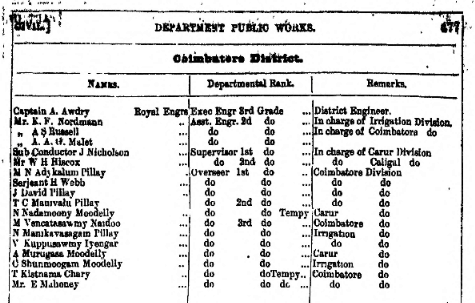
Sample page in 1878 British in India directory at Findmypast.com.
Continental Europe
Germany. Nearly 2.5 million indexed names have been added to FamilySearch’s free collection, Germany, Baden, Archdiocese of Freiburg im Breisgau, Catholic Church Records, 1678-1930. This database includes baptism, marriage and burial records. Another German collection at FamilySearch, Germany, Schleswig-Holstein, Kreis Steinburg, Civil Registration, 1874-1983, has also been updated.
Additionally, Ancestry.com has recently published new German vital records collections: Menden (Sauerland) Births, 1874-1906, Menden (Sauerland) Marriages, 1874-1935 and Menden (Sauerland) Deaths, 1874-1986.
Netherlands. FamilySearch.org has added over 40,000 indexed records to the free Netherlands, Noord-Holland, Civil Registration, 1811-1950. This collection includes “Civil registration of births, marriages, and deaths,…ten year indexes, marriage intentions, marriage proclamations, and marriage supplements.”
Poland. Ancestry.com has published a new collection, Poland, Krakow Apartments of Displaced Jews, 1940. This comes from the World Memory Project in partnership with the United States Holocaust Memorial Museum, so these records are free to search.
South America
Brazil. FamilySearch has added over 35,000 indexed names to Brazil, Minas Gerais, Catholic Church Records, 1706-1999. These are “baptism, marriage, and death records created by various Catholic parishes and diocese,” and the collection continues to be updated. Additionally, nearly 60,000 names have been added to the FamilySearch database, Brazil, São Paulo, Immigration Cards, 1902-1980.
Peru. FamilySearch has updated two civil registration collections for Peru: Puno, Civil Registration, 1890-2005 and Junín, Civil Registration, 1881-2005. These include “births, marriages, deaths, indexes and other records created by civil registration offices.”
The United Kingdom
UK images. The Irish Times and other news outlets recently picked up the news that subscription giant Ancestry.com published a new collection of historical images: UK, Historical Photographs and Prints, 1704-1989. The Irish Times reported that the collection “include[s] more than 120 images taken in Ireland, offer an insight into daily life in Irish cities, towns, villages and countryside between the late 1800s and the 1950s.” Just for fun, try browsing the collection on the different images categories, such as transport, nurses, navy, royalty or weddings (an image from the latter category is shown at the top of this article, in honor of the royal wedding).
Recent UK Deaths. Find over 2.5 million records in Findmypast’s UK Deaths, 2007-2016. “The collection covers England, Scotland, Wales, Northern Ireland, the Isle of Man, and Jersey and list the individual’s name, date of death, and location of death.”
United States
U.S obituaries. Findmypast.com has added over 2.5 million new records to its United States Obituary Notices index, which references data from Tribute.com, an online obituary news site.
Delaware. MyHeritage.com has published over 125,000 pages in a new collection, Delaware Newspapers, 1880-2009 from three newspaper titles: The Sunday Morning Star, Cape Gazette and Delaware News.
Idaho. Ancestry.com has updated several vital records databases for this state, including: Idaho, Birth Index, 1861-1917, Stillbirth Index, 1905-1967, Idaho, County Birth and Death Records, 1863-1967, Idaho, Marriage Records, 1863-1967, Idaho, Divorce Records, 1947-1967 and Idaho, Death Records, 1890-1967.
Iowa. More than a quarter million indexed names have been added to FamilySearch’s free database, Iowa, Old Age Assistance Records, 1934-1946. According to the site, “These records include principal name, date, and place of birth; parents’ names; and contemporary addresses. The birth information is especially significant as it applies to Iowa settlers who may not appear in regular birth records.”
Kentucky. FamilySearch has added over 30,000 new records to its free collection, Kentucky Death Records, 1911-1965, which comprises indexed images of state death certificates.
Louisiana. Over 235,000 indexed names have been added to the free FamilySearch collection, Louisiana, Parish Marriages, 1837-1957. Record images are included in this collection of “marriage licenses and certificates, including a few marriage declarations and marriage stubs for the years 1837 to 1957.”
Maine. More than 2 million newspaper page images appear in the new MyHeritage.com collection, Maine Newspapers, 1861-2008. Among the 16 titles represented at present are Sun Journal, Bangor Daily News, Lewiston (Evening/Daily Evening/Wednesday/Saturday) Journal, Biddeford Weekly Journal, The Quoddy Times, Riddeford Journal, The Union and Journal, New Gloucester Independent News and The Original Irregular.
New Hampshire. MyHeritage also published nearly 650,000 images in the new New Hampshire Newspapers, 1869-2008. The seven newspapers represented are The Telegraph, Nashua Daily Telegraph, Peterborough Transcript, The Milford Cabinet and Wilton Journal, Merrimack Journal, Hollis Brookline Journal and Bedford Journal.
Oklahoma. Free at FamilySearch are nearly 25,000 new records added recently to Oklahoma, School Records, 1895-1936. According to the site, the school records are “primarily annual censuses, of pupils who attended schools in Oklahoma counties between 1895 and 1936. This collection will be published as records and images become available.”
Rhode Island. MyHeritage.com has published nearly 600,000 digital images in the new collection, Rhode Island Newspapers, 1778-1938. At launch, the collection includes 26 titles. Among them are The Morning Herald, Evening Tribune, Providence News, Manufacturers and Farmers Journal, Evening Telegraph, Providence Evening Press, Providence Morning Star, Pawtuxet Valley Gleaner, Hope Valley Advertiser and more.
Learn to use England parish records
England’s earliest useful census is from 1841, and civil records only go back to 1837. So England’s parish records just might prove your genealogical salvation. Click here to learn more about using them.

About the Author: Sunny Morton
Sunny is a Contributing Editor at Lisa Louise Cooke’s Genealogy Gems; her voice is often heard on the Genealogy Gems Podcast and Premium Podcasts. She’s known for her expertise on the world’s biggest family history websites (she’s the author of Genealogy Giants: Comparing the 4 Major Websites); writing personal and family histories (she also wrote Story of My Life: A Workbook for Preserving Your Legacy); and sharing her favorite reads for the Genealogy Gems Book Club.
Disclosure: This article contains affiliate links and Genealogy Gems will be compensated if you make a purchase after clicking on these links (at no additional cost to you). Thank you for supporting Genealogy Gems!
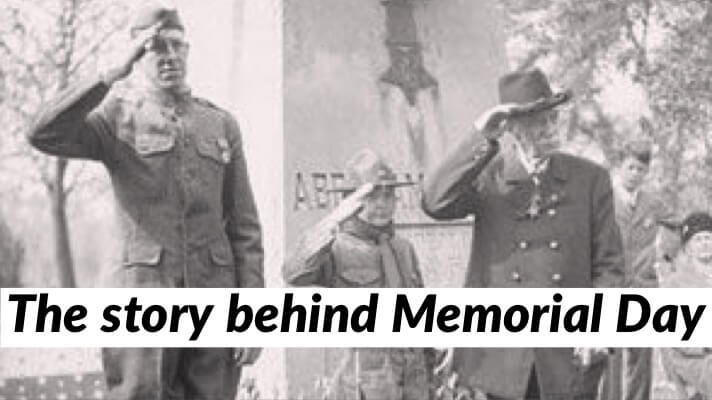
The Story of Memorial Day
The history of Memorial Day–formerly Decoration Day–and what he will be doing to honor it are shared here by Military Minutes contributor Michael Strauss. We also give you quick links to more free family history articles on researching your ancestors who gave the ultimate sacrifice on the battlefield.
(Image right: Gravesite in Oak Woods Cemetery, Chicago, IL. Decoration Day, 1927. Photo: Chicago Daily News)
History of Memorial Day
In 1865, just after the close of the Civil War, a local druggist in Waterloo, New York suggested placing flowers on the graves of fallen soldiers in his community.
The following year, another area resident, General John B. Murray, led the small village in putting flags at half-mast and decorating the gravestones of soldiers buried in the town’s three cemeteries. They repeated their efforts the following year. Many other communities in both the North and South also honored their war dead during this time period.
General John A. “Black Jack” Logan spearheaded the idea of a national day of remembrance for fallen Civil War soldiers in 1868. Logan, a former Union General, was the National Commander of the Grand Army of the Republic (GAR), which constituted living veterans of the war. On May 5, 1868, the GAR issued General Order No. 11 to designate May 30, 1868 as the day to decorate and commemorate the graves of fallen comrades of the late Civil War.
The wording of the order is very specific: “Let us then at the time appointed gather around their sacred remains and garland them with choicest flowers of springtime…Let us raise above them the dear old flag they saved from dishonor…in this solemn presence renew our pledge to aid and assist those whom they have left among us…the soldier’s and sailor’s widow and orphan.” This order later became known as the “Memorial Day Order” and can be read on the website of the U.S. Department of Veteran Affairs as part of the National Cemetery Association.
On this date at Arlington National Cemetery, more than 20,000 gravestones of both Union and Confederate veterans were remembered. General James A. Garfield (who later became President of the United States) and other political leaders spoke to an audience of more than 5,000 persons. In following years, May 30th became known as Decoration Day, a national day of remembrance of the Civil War dead.
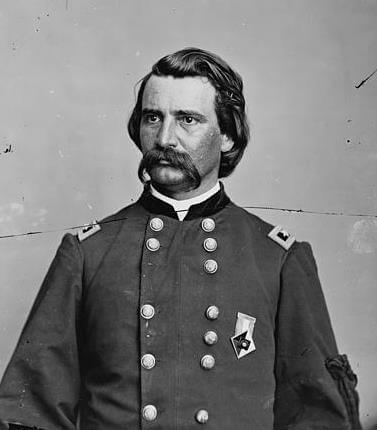
General John A. “Black Jack” Logan. Library of Congress image.
After the end of World War I in 1918, the scope of Decoration Day expanded to include all war dead since the Revolutionary War. The name gradually gave way to “Memorial Day,” a term first used in 1882 that didn’t become more generally accepted until after the end of World War II. A 1968 Act of the United States Congress, which went into effect in 1971, formally calendared the dates of several national holidays, including Labor Day, Veterans Day, and Memorial Day—the latter to be held in perpetuity on the last Monday in May. (Veterans Day, honoring all veterans who served rather than just our war dead, is held on November 11th.)
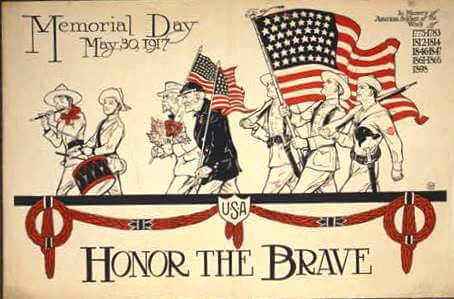
1917 poster, Library of Congress image.
Interestingly, not every part of the United States fully supported Decoration Day. The Civil War created divisions even in peacetime, long after the guns fell silent in 1865. A number of Southern states have over the years honored their own Confederate dead on specific dates. In Mississippi, for example, they remember Memorial Day the last Monday of April. Both North Carolina and South Carolina observe this date on May 10th. In Virginia, the last Monday of May is observed as with most of the country, but it is often called Confederate Memorial Day.
For a little more history (and some great historical re-enactment footage), enjoy this quick video.
How I will be honoring Memorial Day
Regardless of the name given this holiday, on Memorial Day here in Utah I will remember and honor those who sacrificed so much for our country by attending a free public event at Camp Floyd. I will be wearing my Civil War uniform with other members of the Utah Living History Association as we recreate and experience camp life; drill; and fire our period weapons to remember when the camp was occupied by the Union Army from 1858-1861. I am the second person in the left in this 2016 photo from the Utah Living History Association. We strive for historical accuracy in our representation of the men stationed at this camp in the years immediately preceding the Civil War. (With the start of the war, the camp was abandoned and the men stationed here moved back East to the fighting. Next to the museum at the camp sits a small rural cemetery to honor the burials of 85 men who died from 1857-1861 who were stationed at the camp while serving with the United States Army.)
Memorial Day isn’t just about remembering those soldiers who died in battle, but about honoring all veterans who have honored us with service. We give this honor—regardless of sectional differences—to those who lost their lives during both wartime and peacetime periods.
Explore and honor your own war dead
Michael Strauss contributes the Military Minutes segment on the free Genealogy Gems Podcast. Why not use his expert tips to trace the stories of those on your own family tree who served in the U.S. military?
Find your ancestors in the 5 branches of the U.S. military
Intro to US military terminology: regular, volunteer, or militiaman?
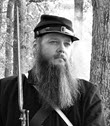
Author: Michael Strauss, AG
Michael Strauss, AG is the principal owner of Genealogy Research Network and an Accredited Genealogist since 1995. He is a native of Pennsylvania and a resident of Utah and has been an avid genealogist for more than 30 years. Strauss holds a BA in History and is a United States Coast Guard veteran.
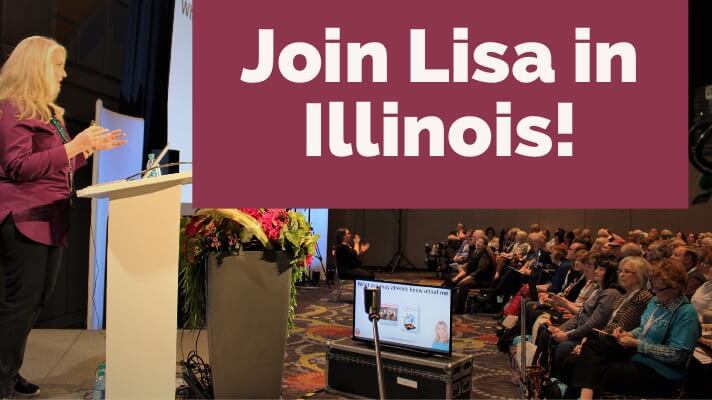
Join Lisa at GeneaQuest 2018 in Illinois
Lisa Louise Cooke will be at CAGGNI’s GeneaQuest 2018 in Hoffman Estates, Illinois on Saturday, June 23. Join her and other expert presenters all day to learn Google strategies for genealogy, a master plan for organizing your research, DNA solutions, brick-wall solutions and more!
The Computer Assisted Genealogy Group of Northern Illinois (CAGGNI) is welcoming Lisa Louise Cooke as a featured speaker at GeneaQuest 2018. This year’s annual event will be held at Northern Illinois University (NIU) Conference Center in Hoffman Estates, Illinois on Saturday, June 23, 2018 from 8:00 am – 4:00 pm.
The theme is Building Your Genealogy Skills, and a genealogy conference is a great place to do just that. In addition to nurturing your skills in the area of analysis, genetics, geography, organization, problem-solving, research and technology, GeneaQuest offers you an opportunity to come shoulder to shoulder with genealogist’s who share your passion for climbing the family tree.
More on GeneaQuest 2018
Who: Lisa Louise Cooke and other expert presenters
What: GeneaQuest 2018
Where: Northern Illinois University Conference Center, Hoffman Estates, IL
When: Saturday, June 23, 2018, 8:00 am – 4:00 pm
Cost: Register online by May 31 for $60 ($55 for CAGGNI members) or $70 after June 1; registration includes buffet lunch (if you register by June 12). Extra fee for labs.
Event Host: Computer Assisted Genealogy Group of Northern Illinois
Lisa will kick off the day with the brush-up-on-Google presentation every genealogist needs, “Update Google! What’s New.” She’ll tell you what you need to know about how Google is evolving and changing. Then she will unleash some advanced Google search strategies for genealogy that you can put into practice right away to get the best results from your online searches.
She will also be teaching these powerful family history classes:
- Create a Free Google Earth Map Collection for Your Research. Come to this session and you’ll walk out with potentially thousands of free historic maps organized for your family history research. And the good news is, you don’t need a lot of tech know-how to do it! You’ll learn how to find free digital maps for your ancestral locations, add them as permanent map overlays to Google Earth and then organize them into your personal map reference collection. Lisa will also cover best practices for keeping them organized so that they continually enrich your research.
- Genealogy On the Go With Mobile Devices. Tablets and smartphones are built for hitting the road and are ideally suited for genealogy due to their sleek size, gorgeous graphics and myriad of apps and tools. In this class, you will discover the top apps and best practices that will make your mobile device a genealogical powerhouse! (iOS and Android.)
- How to Organize All This Genealogy Stuff. Save yourself future frustration and disappointment by putting a solid genealogy organizational plan in place for all the types of items that will be coming your way. Lisa will share with you the systems she personally uses that have proven to be reliable and efficient. She will cover systems for four types of stuff: paper and physical items; digital files; family tree data and all that information you’ve discovered online and need to put somewhere.
Other topics for the day also promise to be fabulous. There will DNA labs for AncestryDNA and GEDmatch, strategies for finding the most elusive ancestors (including DNA strategies), finding female ancestors, and introductory presentations on the free websites, WikiTree and Find A Grave. Click here for a detailed schedule of the day’s event and registration information.
Learn Virtually: Genealogy Gems Premium eLearning
Can’t make it to GeneaQuest 2018? You do have another learning option. Genealogy Gems Premium eLearning gives you access to video versions of Lisa Louise Cooke’s top classes for a full year! Think Google, Google Earth, organizing your genealogy, Evernote, using the cloud for genealogy, mobile research strategies, methodology and more than 20 classes from Your DNA Guide Diahan Southard on getting the most out of your DNA testing. You’ll need that full year to get through more than 50 video classes as well as all episodes of the Genealogy Gems Premium Podcast! Click here to see how Premium eLearning can help you open new doors in your genealogy research.

About the Author: Sunny Morton
Sunny is a Contributing Editor at Lisa Louise Cooke’s Genealogy Gems; her voice is often heard on the Genealogy Gems Podcast and Premium Podcasts. She’s known for her expertise on the world’s biggest family history websites (she’s the author of Genealogy Giants: Comparing the 4 Major Websites); writing personal and family histories (she also wrote Story of My Life: A Workbook for Preserving Your Legacy); and sharing her favorite reads for the Genealogy Gems Book Club.


